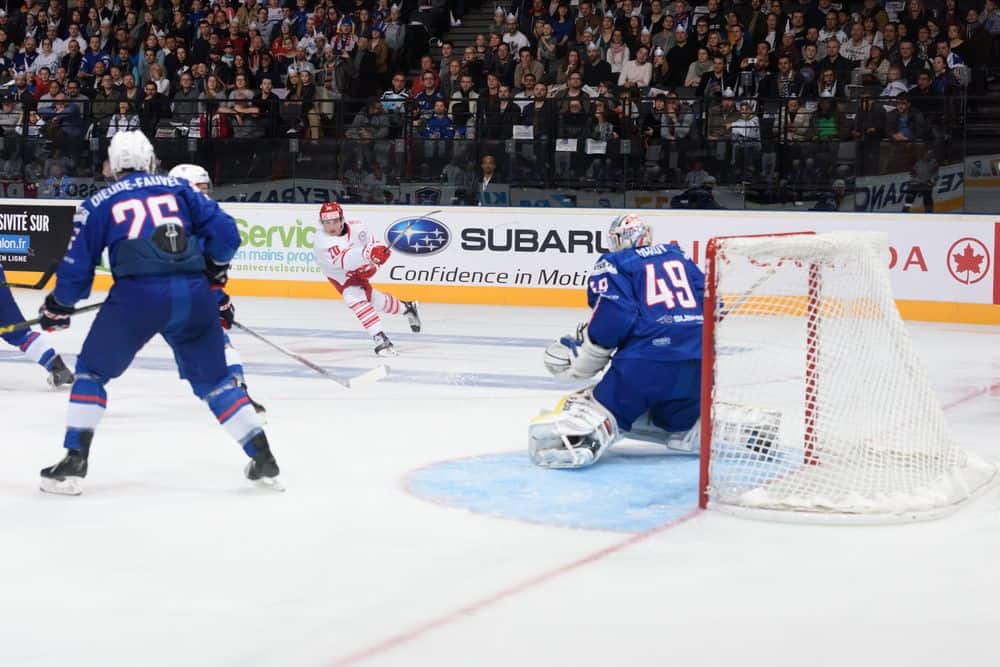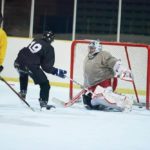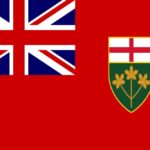In the fast-paced world of hockey, understanding the offsides rule is crucial for players, coaches, and fans alike.
Welcome to ‘What Is Offsides in Hockey? The Ultimate Guide to the Rule – Coaching Kidz.’
This comprehensive guide will provide a detailed explanation of the offsides rule in hockey, its purpose, and its impact on the game.
From exploring the different zones of a hockey rink to discussing the consequences of violating the rule, this guide will equip you with a comprehensive understanding of the offsides rule in hockey.
Zones of a Hockey Rink
The hockey rink is divided into three zones: the defensive zone, the neutral zone, and the attacking zone. Each zone plays a crucial role in a team’s strategy and overall gameplay.
The defensive zone is the area in which a team protects their own net and focuses on preventing the opposing team from scoring. Defensive zone strategies include maintaining good positioning, clearing the puck out of danger, and blocking shots.
The neutral zone, located between the two blue lines, is of great importance as it acts as a transition zone where teams can gain control of the puck and initiate offensive plays. It is essential to have strong neutral zone play to create effective counterattacks and prevent the opposition from entering the attacking zone with speed. A well-executed neutral zone play can lead to turnovers and scoring opportunities for the team.
NHL Offsides Rule
One important rule in the game of hockey is the NHL Offsides Rule. This rule plays a crucial role in maintaining fair play and the overall quality of the game. By enforcing the NHL offsides rule, the game of hockey remains fair and exciting, ensuring that players cannot disrupt the flow and pace of the game by strategically positioning themselves in the attacking zone.
Here are some key points to understand about the NHL offsides rule:
- According to NHL Rule 83, attacking players must not precede the puck into the attacking zone.
- Skates, not the stick, determine offsides, and it is called when both skates are completely over the leading edge of the blue line involved in the play.
- The player controlling the puck can enter the zone ahead of the puck without offsides being called.
- The offsides rule prevents players from cherry-picking, which is staying in the attacking zone to wait for a pass and a clear shot at goal.
- Offsides calls result in a turnover of possession to the defending team and play resumes after a face-off in the neutral zone.
Skates Determine Offsides
Enforcing the NHL offsides rule, the determination of offsides in hockey is based on the position of the player’s skates. To determine whether a player is offside, both of their skates must be completely over the leading edge of the blue line involved in the play.
When it comes to determining infractions, the rule states that an attacking player must not precede the puck into the attacking zone. It is important to note that the player controlling the puck can enter the zone ahead of the puck without offsides being called. However, if an opposing player brings the puck into their own defensive zone, the offsides is ignored.
The consequences of offsides result in a turnover of possession to the defending team and play resumes with a face-off in the neutral zone. By using the player’s skates to determine offsides, the NHL ensures fair play and maintains the overall quality of the game.
Blue Line Involvement in Offsides
To further understand the NHL offsides rule, it is important to discuss the role of the blue line in determining offsides in hockey. The blue line plays a crucial role in determining whether a player is offside or not.
Here are five key points regarding blue line involvement and the offsides rule:
- The player’s skates must be completely over the leading edge of the blue line involved in the play for it to be considered offsides.
- If a player enters the attacking zone ahead of the puck without possession, it results in a delayed offside.
- The linesman will raise their hand to indicate the offside, and the player must leave the zone and touch up (retreat to the neutral zone) before touching the puck.
- If the player fails to return to the neutral zone before touching the puck, it will be called as an offsides violation.
- The delayed offside rule allows for a more fluid game, as immediate whistles for offsides can disrupt the flow of play.
Understanding the blue line’s involvement in offsides is essential for players, coaches, and fans alike to grasp the intricacies of the NHL offsides rule.
Player Control and Offsides
In hockey, the determination of offsides is directly tied to the player’s control of the puck and their position on the ice. According to the NHL Rule 83, attacking players must not precede the puck into the attacking zone. This means that if a player enters the attacking zone before the puck crosses the blue line, offsides will be called.
However, if the player is in control of the puck, they can enter the zone ahead of the puck without offsides being called.
It is important to understand the consequences of offside calls. When offsides is called, the play is stopped, and a face-off occurs in the neutral zone. The defending team is awarded possession of the puck, resulting in a turnover.
Player control plays a crucial role in determining offsides, and being aware of the offside consequences is essential for fair play in hockey.
Offsides in Opposing Team’s Zone
When the puck is already in the opposing team’s zone, players are allowed to be in that zone without being called offsides. This opens up various strategic opportunities for the attacking team.
Here are the advantages of the offsides rule in the opposing team’s zone:
- Offensive positioning: Players can strategically position themselves in the opposing team’s zone to create scoring opportunities and put pressure on the defense.
- Offensive zone control: By having players in the opposing team’s zone, the attacking team can maintain control of the puck and sustain offensive pressure.
- Cycling the puck: Players can utilize the space in the opposing team’s zone to cycle the puck, creating space and opportunities for scoring.
- Quick transitions: Being in the opposing team’s zone allows for quick transitions from defense to offense, catching the opposing team off guard.
- Offensive strategies: The attacking team can implement various offensive strategies, such as setting up screens, making cross-ice passes, and executing intricate plays.
Purpose of the Offsides Rule
The purpose of the offsides rule in hockey is to prevent players from gaining an unfair advantage by cherry-picking in the attacking zone. Cherry-picking refers to when a player stays in the attacking zone, waiting for a pass and a clear shot at goal. Without the offsides rule, players could disrupt the flow and pace of the game, leading to an imbalance in team strategies. By enforcing the offsides rule, fair play is ensured, and the overall quality of the game is maintained.
The benefits of the offsides rule can be seen in the impact it has on team strategies. Teams must strategically position themselves in order to maintain a balanced attack while also adhering to the offsides rule. This requires players to make quick decisions and work together to maintain possession and create scoring opportunities. The offsides rule adds an element of strategy and teamwork to the game, making it more exciting and engaging for players and fans alike.
| Benefits of the Offsides Rule | Impact of Offsides on Team Strategies |
|---|---|
| Ensures fair play | Requires strategic positioning |
| Maintains the quality of the game | Promotes quick decision-making |
| Prevents cherry-picking | Encourages teamwork and coordination |
Preventing Cherry-Picking
To eliminate unfair advantages and maintain the integrity of the game, the offsides rule in hockey serves as a crucial measure in preventing cherry-picking. Cherry-picking refers to the act of staying in the attacking zone to wait for a pass and a clear shot at goal.
The benefits of offsides in preventing cherry-picking are:
- Ensures fair play by requiring attacking players to enter the attacking zone after the puck.
- Promotes the flow and pace of the game by preventing players from lingering in the attacking zone.
- Encourages teamwork and strategic play by discouraging individual players from solely focusing on goal-scoring opportunities.
- Enhances the overall quality of the game by maintaining a balance between offense and defense.
- Provides equal opportunities for both teams to possess and control the puck.
Disruption of Flow and Pace
Offsides in hockey can disrupt the flow and pace of the game, affecting the overall dynamics and rhythm on the ice. When an offsides call is made, the game is stopped, and a face-off occurs in the neutral zone. This interruption breaks the momentum of the teams and can lead to a loss of momentum and energy. Additionally, the defending team gains possession of the puck, further disrupting the attacking team’s offensive strategy. The impact on gameplay is significant, as teams rely on a continuous and fluid movement to maintain control and create scoring opportunities. Offsides not only hinders the attacking team’s progress but also gives the defending team a chance to regroup and reposition themselves. Thus, the disruption caused by offsides can have a lasting impact on the overall flow and pace of the game.
| Subtopic: Disruption of Flow and Pace |
|---|
| Impact on Gameplay |
| Flow of the Game |
| Rhythm on the Ice |
Ensuring Fair Play
An essential aspect of maintaining fairness in the game of hockey is ensuring that all players adhere to the offsides rule. This rule prevents players from gaining an unfair advantage by entering the attacking zone ahead of the puck.
However, enforcing offsides can present challenges for officials, as they need to make quick and accurate judgments based on the position of the players’ skates in relation to the blue line. Inconsistent officiating can lead to frustration and disputes among players and coaches, highlighting the importance of consistent and unbiased calls.
Offsides Calls and Resumption of Play
When an offsides call is made in hockey, play is stopped and a face-off occurs in the neutral zone. This is to ensure fair play and maintain the overall quality of the game. The linesman blows the whistle to signal the offsides call and both teams line up for the face-off. To give the audience a clearer understanding, let’s take a look at the following table:
| Situation | Offsides Call and Resumption of Play |
|---|---|
| Offsides call made | Play is stopped |
| Face-off location | Neutral zone |
| Possession turnover | Defending team |
| Play resumes after face-off | Both teams line up |
When defending against offsides situations, teams employ various strategies. One common strategy is to have a player stationed near the blue line to prevent opposing players from entering the attacking zone before the puck. This player acts as a barrier and forces the attacking team to either delay their entry or risk an offsides call. Additionally, communication and awareness among teammates are crucial in identifying potential offsides situations and adjusting player positioning accordingly. By effectively defending against offsides, teams can maintain control and prevent their opponents from gaining an unfair advantage.
Face-off in the Neutral Zone
To ensure a fair resumption of play after an offsides call, the face-off takes place in the neutral zone. This location allows both teams an equal opportunity to regain possession of the puck and continue the game. Face-offs in the neutral zone are crucial as they can determine the momentum and flow of the game.
Here are different strategies for winning face-offs:
- Quickness: Players try to anticipate the drop of the puck and react quickly to gain control.
- Positioning: Proper body and stick positioning can give players an advantage in winning the face-off.
- Communication: Teammates can work together to execute set plays and win the face-off.
- Strength: Using physical strength and leverage to overpower opponents and win the puck.
- Deception: Players can use different techniques to deceive their opponents and gain an advantage.
Winning face-offs can lead to increased possession time, scoring opportunities, and ultimately, a higher chance of winning the game.
Turnover of Possession
After an offsides call, the turnover of possession occurs, resulting in the defending team gaining control of the puck.
This turnover of possession has a significant impact on gameplay. It allows the defending team to regain control and potentially launch a counterattack against the offensive team.
The defending team can now employ defensive strategies to prevent the opposing team from scoring. They can clear the puck out of their defensive zone, establish a strong defensive structure, and create opportunities for a quick transition to offense.
The turnover of possession also disrupts the flow of the game for the offensive team, as they have to regroup and re-establish their offensive strategy.
Delayed Offsides in Hockey
The implementation of delayed offsides in hockey allows for a player to enter the attacking zone ahead of the puck without possession. This rule adds an element of strategy to the game and can result in exciting plays.
Here are some key points to understand about delayed offsides:
- The linesman will raise their hand to indicate an offside player.
- The offside player must leave the attacking zone and ‘touch up’ by returning to the neutral zone before re-entering the attacking zone.
- If the offside player fails to touch up and touches the puck while still in the attacking zone, an offsides violation will be called.
- Teams can use delayed offsides scenarios strategically to maintain possession and create scoring opportunities.
- To avoid delayed offsides, teams can work on their timing and communication, ensuring that players enter the attacking zone at the right moment to avoid being offside.
Frequently Asked Questions
How Is the Offside Rule Enforced in the NHL and Other Leagues?
In the NHL and other leagues, the offside rule is enforced by the linesman. If attacking players precede the puck into the attacking zone, offsides is called. Variations include delayed offsides where players must touch up before touching the puck. Offside challenges can be used to review these calls.
What Happens if a Player Enters the Opposing Team’s Zone Before the Puck but Does Not Have Possession of the Puck?
If a player enters the opposing team’s zone before the puck without possession, it is considered an offside violation. The player must leave the zone and touch up before touching the puck to avoid a penalty.
Can a Player Be Called Offside if Only One Skate Is Over the Blue Line?
When it comes to player positioning in hockey, the offsides rule is crucial. According to the NHL, if both skates of an attacking player are completely over the leading edge of the blue line, they will be called offside.
What Is the Purpose of the Offside Rule in Hockey?
The purpose of the offside rule in hockey is to prevent players from cherry-picking and disrupting the flow of the game. Enforcing the rule effectively ensures fair play and maintains the overall quality of the game.
What Happens After an Offside Call Is Made?
After an offside call is made in hockey, the linesman blows the whistle to stop the game. A face-off occurs in the neutral zone, and play resumes once the face-off is completed.
Conclusion
In conclusion, understanding the offsides rule in hockey is essential for players, coaches, and fans to fully grasp the dynamics of the game. By preventing cherry-picking and ensuring fair play, the offsides rule maintains the integrity of the sport.
Knowing the criteria for determining offsides, the consequences of violating the rule, and the process of resuming play after an offsides call allows individuals to appreciate and engage with hockey on a deeper level.
So, lace up your skates and dive into the thrilling world of hockey with a solid understanding of the offsides rule.









